Every presidential candidate has a list of states they’re expected to win, but there are always states that are too close to call because they have similar numbers of registered voters for each of the two dominant political parties: Democrat and Republican. It’s in these “swing” states that candidates invest the most time and money in advertising and campaigning in hopes of swinging voters to their side.
North Carolina is considered a swing state for the 2020 presidential election.
North Carolina hasn’t always been a swing state. Let’s look at a quick history of voting trends in the state:
- From 1876 through 1964 North Carolina was almost exclusively Democratic.
- In 1968, the state became almost exclusively Republican—primarily in response to white voter wariness with the civil rights legislation passed in the 1960’s.
- The movement to a more evenly split electorate within the state started in 2008 when Barack Obama narrowly defeated John McCain.
- In 2012, North Carolina swung back to Republican when Mitt Romney narrowly won the state. Donald Trump’s win in 2016 was also secured by a very narrow margin.
As of October 10, 2020, there are 7,164,388 registered voters in NC. The largest majority are registered Democrat, followed by Unaffiliated, and then Republican. Each of those affiliations are only separated by around 200K registered voters.
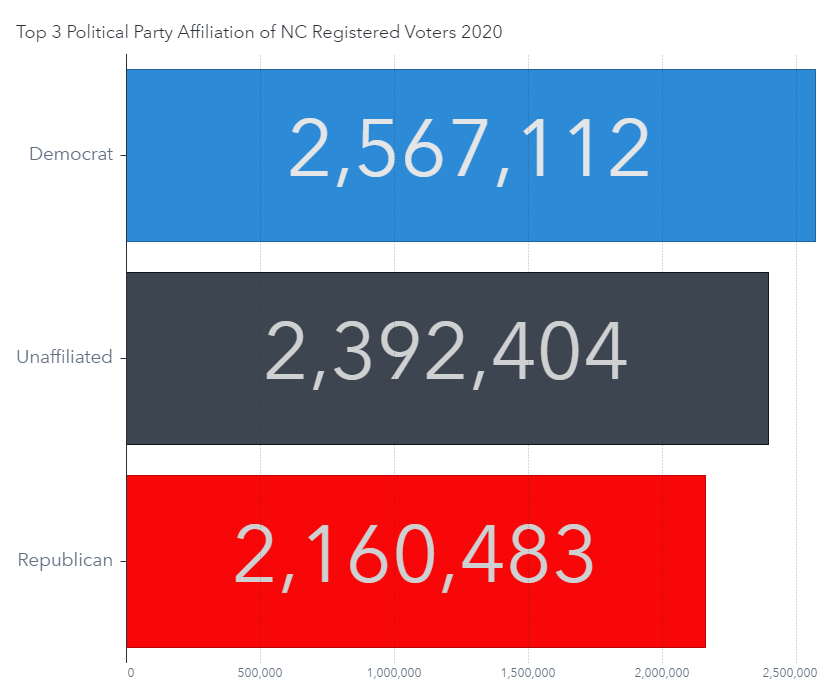
How does this compare to early October in 2016? There are slightly fewer people registered Democrat, and slightly more people registered Republican and Unaffiliated now than there were in 2016.
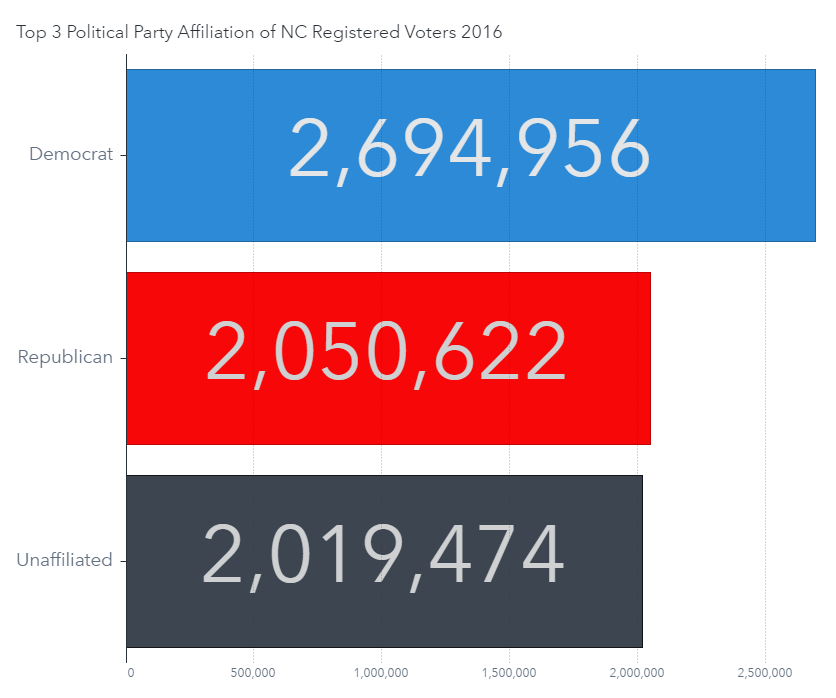
Voter participation
Voter registration data is only part of the story. Just because someone is registered to vote doesn’t mean they will. What did voter participation in North Carolina look like during the last three presidential elections?
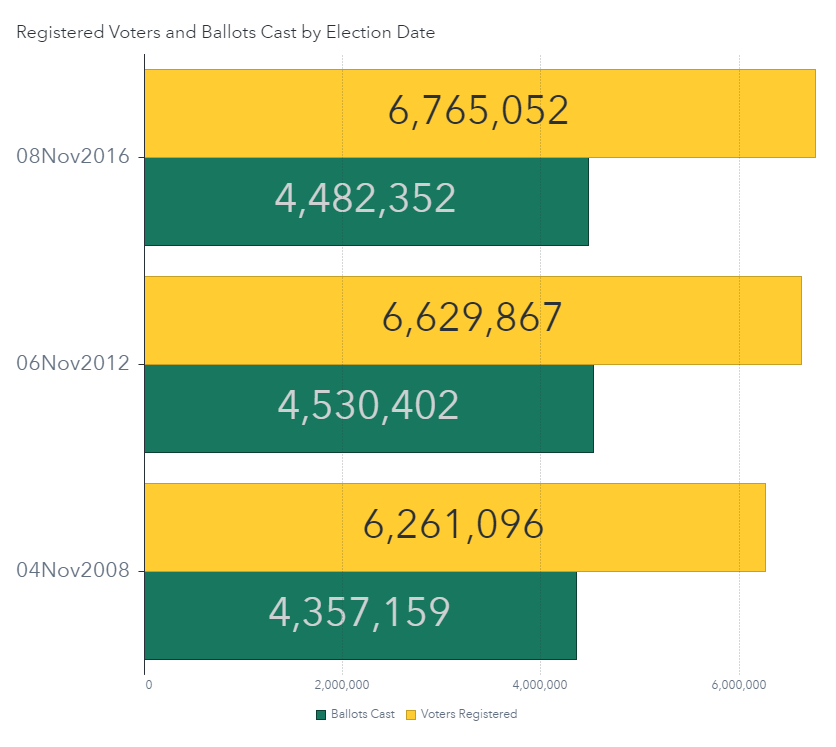
Interestingly, the number of registered voters and the number of voters who actually participated has remained fairly consistent. Broken down by percentage, that’s 69% in 2008, 68% in 2012, and 67% in 2016. That’s a lot of votes left on the table.
Has participation by party remained consistent? The number of voters choosing to register as Unaffiliated has increased over the past three elections as has their participation. Republican registration and participation have remained steady, and the number and participation of registered Democrats has decreased.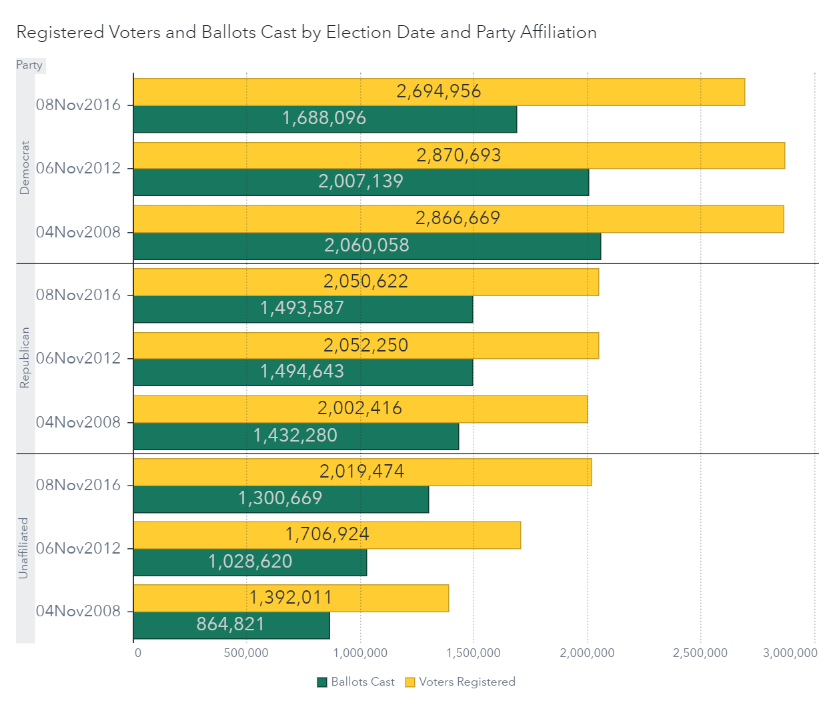
Affiliation by age
Beyond political parties, what do we know about registered voters in the last election? Baby Boomers were the biggest segment of voters and the Silent Generation voted more than Generation Z. The Generation Z segment is understandably small. Generation Z starts with anyone born in 1997, so eligible voters for the 2016 election would only span 2 birth years, 1997 and 1998, making them either 18 or 19 at that time.
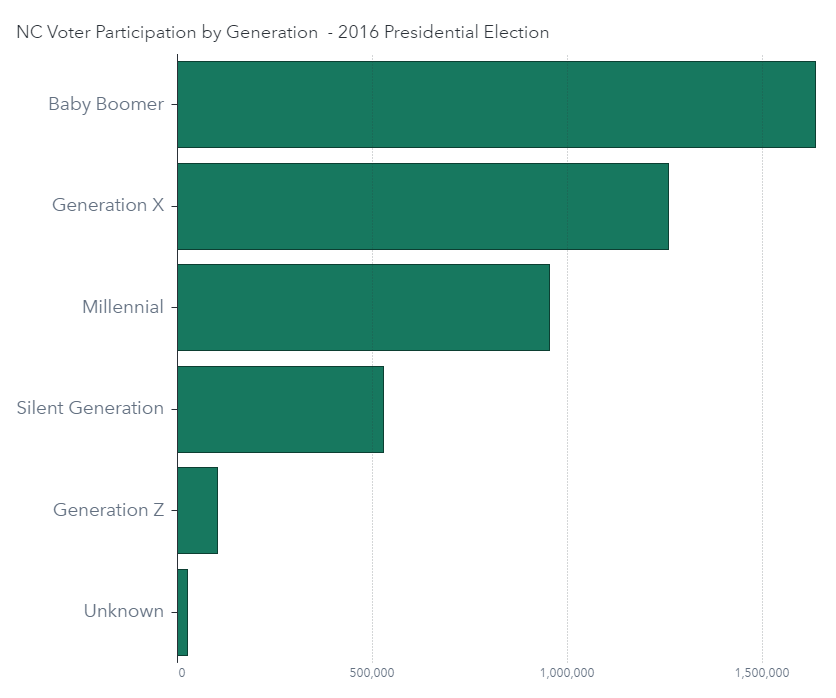
What did the generations look like by party in 2016? Is it true that the younger generations are more liberal than the older generations? The Millennials and Generation Z registered voters are more Unaffiliated than Democratic or Republican by a small margin, however, when you look at the number of those younger voters who are actually affiliated with a party, it appears that most are still interested in participating in the two major parties.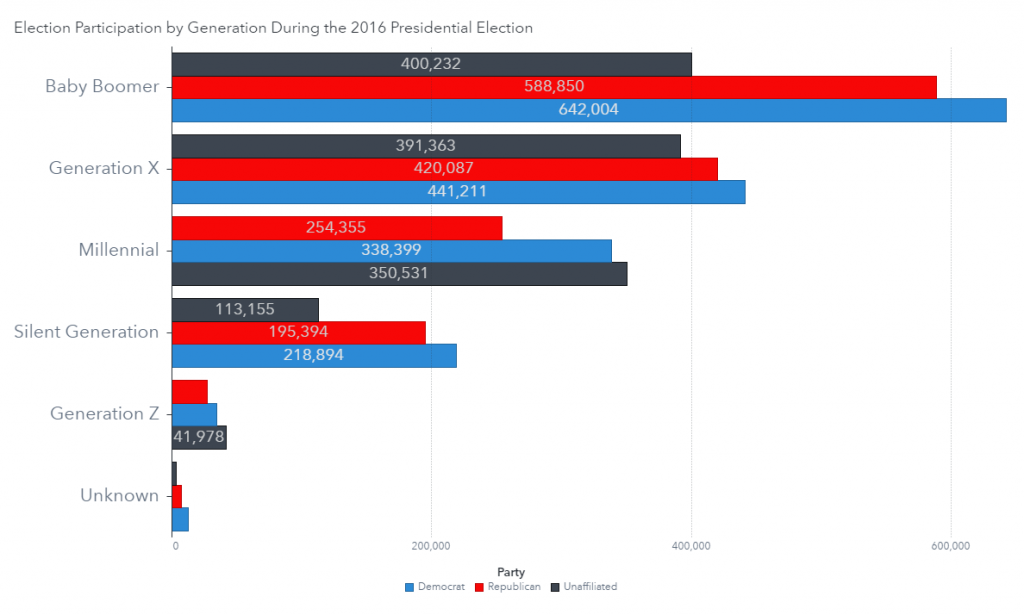
Voter participation by generation by party breakdown looked very similar in 2012 and 2016. The most notable difference in 2012 was the breakdown by party of Millennials. In 2012, there were more Millennials participating as Democrats than other affiliations. In 2016 there were more Unaffiliated Millennials participating than anything else.

General and primary elections
When the data is broken down by election type—general elections versus primary elections, the participation by generation becomes variable. Baby Boomers lead the charge in participation regardless of election type. Generation X and the Silent Generation also participate consistently. Millennials participate in general elections but haven’t been as involved in the primaries until very recently.

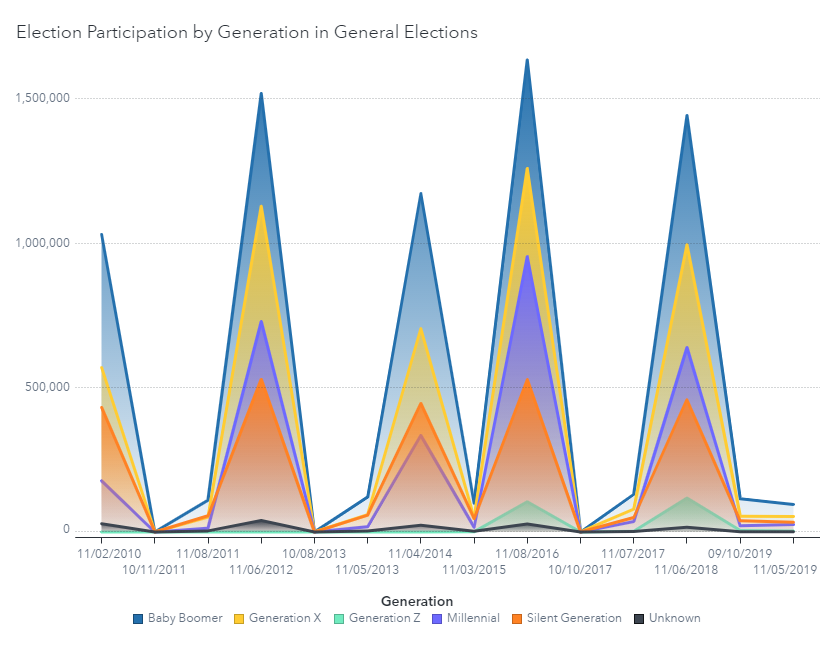
Third-party voters
There are three other parties recognized in NC—the Libertarian, Green, and Constitution parties. They comprise a small percentage of voters, but those voters can mean the difference between a candidate’s win or loss. The largest participation of these parties is Libertarian. There are over 50,000 voters in NC registered with third parties.
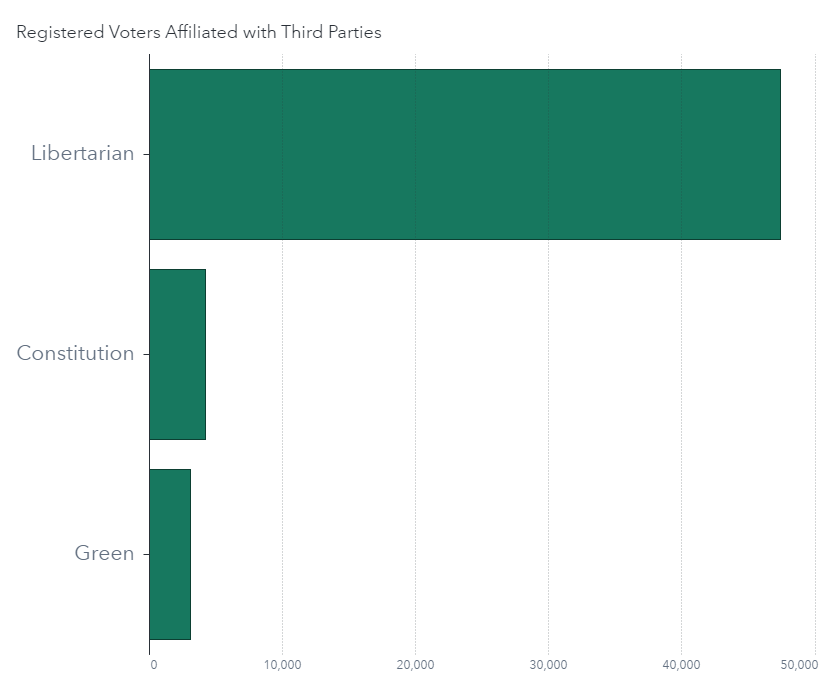
Looking at election participation by third parties by generation, Millennials and Generation X comprise the most voters.
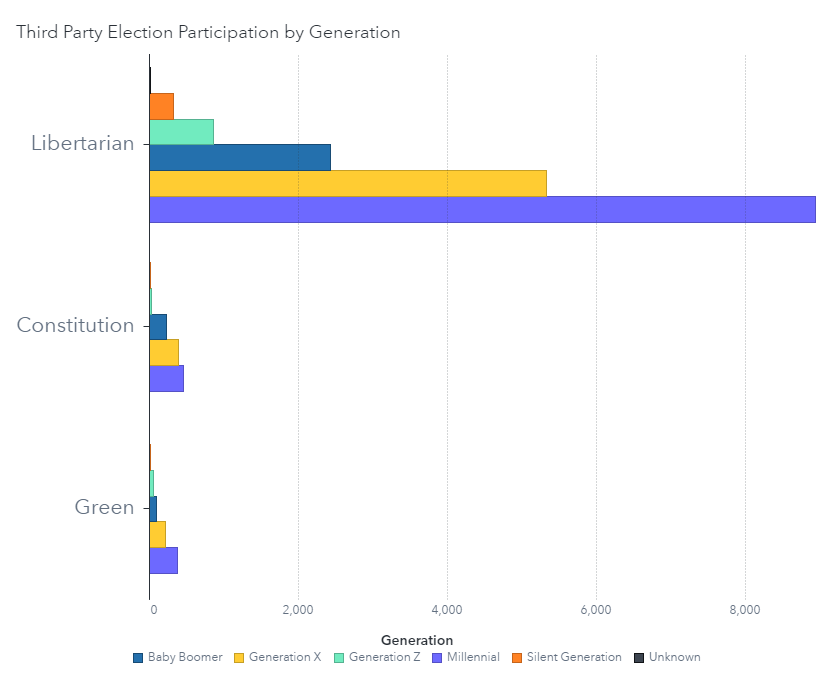
Every vote is important, but even more so in close races in swing states:
- Donald Trump beat Hillary Clinton in 2016 by 173,315 votes.
- Mitt Romney won NC in 2012 over Barack Obama by 92,004 votes.
- In 2008, Barack Obama won NC by just 14,177 votes!
In the 2016 presidential election, almost 2.3 million people didn’t vote at all. This year despite the pandemic, there are measures in place to make voting easy, accessible, and safe. Early voting starts on October 15 and runs through October 31 in North Carolina. Absentee ballots must be requested by October 27 and must be postmarked or returned in person by November 3.
If you aren’t registered to vote and still want to register, your final option is to do same-day registration at early voting sites from October 15 through October 31. You must provide proof of residence and attest to your eligibility. Your vote will be counted unless the county board of elections deems your registration invalid.
Make sure your voice is heardI used SAS Visual Analytics to analyze and visualize the data from the North Carolina State Board of Elections to create the charts and graphs in this post.
